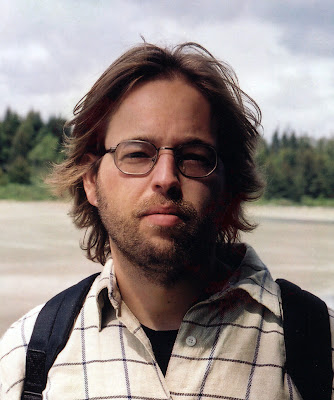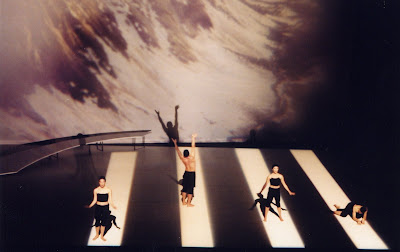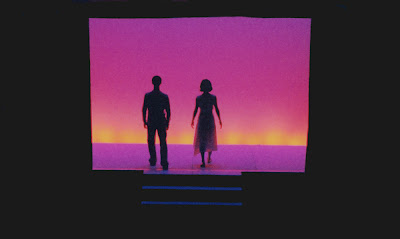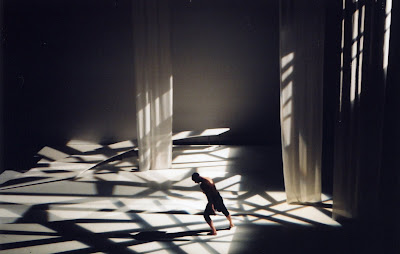 1) What the fuck is going on?
1) What the fuck is going on?Life is pretty good. Vancouver doesn’t get crazy hot like Toronto so summer is really nice. Everybody’s out on the streets and on the beaches, everybody’s taking their clothes off, every day there’s a new festival starting. BC is the place to be in the summertime.
2) What does it mean to you to win this year’s Dora Award for lighting design in the independent theatre category?
Well, I flew in especially for one night. I am trying to establish myself as a designer in Toronto, so getting two nominations on my first two shows in town was great, and winning was fantastic. I hope I’ll get some work out of it . . . I was recently at the Magnetic North festival in Ottawa and I discovered that I get more job offers in one night in a pub full of drunk artistic directors then I do in a year of sending emails, so coming over made sense – but people didn’t drink as much as I expected.
3) What was it, do you think, about The Four Horseman Project’s lighting design that won the confidence of the Dora jurors?
Well, it was a very colorful show and there were a lot of different looks, I was able to do pretty precise lighting. Because there was no narrative there was no need to establish anything and I could be free to create something new for every number, which makes for a pretty dynamic lighting design. I also had two directors (the fabulous Kate Alton and the charming Ross Manson) who kept wanting more and more, and I don’t like to say no . . .
I worked with a lot of different patterns (gobos), some of them steel and some glass. The steel patterns were custom made for this show and were taken straight from the animation, which made for a unified look between the projections and the lighting, the glass patterns were very effective when projected on the big white cyclorama.
To be totally honest I think that the fact that Bruce Alcock’s amazing projections couldn’t be nominated also helped. The visuals were pretty stunning and I guess the jurors wanted to acknowledge that in some way. Besides, the show was very well received and when you like a show it’s very easy to like everything about it.
4) Do you have any unifying theories that inform your approach to lighting design, generally?
I can think of some: Don’t be afraid to try new things, always take risks. Don’t try to to cut corners. Always do what’s good for the show, remember that your design is just one element in the big picture. Try to remain practical, don’t fall in love with your own work. Trust your instincts. Be very, very organized and do your homework.
I always try to light theatre like I light dance, I use very little front light, and as much side and back light as possible. Low side light (shin busters) and diagonal backs are my favorite lighting positions. I like bold choices with colour and patterns, while maintaining a certain subtlety. I try to do precise lighting so I use a lot of specials and usually have a lot of cues. Having said all that – simplicity is a real key and very often less is more.
5) What are some of the common lighting mistakes you see being made at the independent theatre level?
Lighting is such a subjective thing I am not sure you can talk about it in terms of mistakes; I think of it more like making poor choices, or choices I disagree with. A lot of people don’t use enough back light which makes for flat lighting, subtlety is really important, not everybody understands subtlety. I often see cueing that looks contrived, finding the right rhythm of a show can be tricky.
 6) What’s the biggest lighting design mistake you’ve ever made?
6) What’s the biggest lighting design mistake you’ve ever made?Once I met with an artistic director of a big company and half way through the meeting I realized I had never read the play . . . Other than that there are always things I wish I could do differently, particularly when time is tight, but I wouldn’t call them mistakes, usually it’s just not having the time to be refined. I learn something new with every show I do, I used to really suffer on opening night because I would only see the things that I wished I did differently, but one thing I learned with time is that you got to let it go. I don’t suffer on opening nights anymore, but I am yet to do a perfect show, something can always be better, I always wish I had another hour with a crew.
 Crime & Punishment directed by James Fagan Tait, the performers are Kevin MacDonald and Alex Ferguson.
Crime & Punishment directed by James Fagan Tait, the performers are Kevin MacDonald and Alex Ferguson. 7) Any tips on how to put together a well-lit show on a small budget?
Simplicity is key. Even when I use a lot of lights or a lot of cues it is important to keep things simple, certainly when you have a small budget. Prioritizing is very important. I usually make a wish list of all the things I would have in a perfect world and then start narrowing it down to match reality, that way your priorities stay clear. I did a show in New York with 12 dimmers, it was some of the best lighting I’ve ever done because every lamp was used really well, and every cue was so important. I don’t think there are rules about a well-lit show; every scenario requires different solutions and often it’s the most creative solution that wins – there is no formula.
8) What was it like to work on a production in Jerusalem?
It’s a lot like working on a production in Toronto, maybe a little more guerilla, less concerns for safety, less rules and more freedom. The biggest difference is that in Israel and Europe there is much more time to do a show. More time to rehearse and more time to tech. When I tell people in Israel that we do a show in three weeks they find it hard to believe, they don’t understand how that’s possible. Other than that it’s very similar to anywhere else in the world; people put their hearts into it, they hardly make any money and they are really passionate about theatre.
 Fear’s Physique choreographed by Gail Lotenberg, the performers are Kevin Bergsma, Caroline Farquhar, Shannon Moreno and Jude Wong.
Fear’s Physique choreographed by Gail Lotenberg, the performers are Kevin Bergsma, Caroline Farquhar, Shannon Moreno and Jude Wong. 9) How would you characterize Vancouver’s independent theatre scene?
These are exciting times to be an artist in Vancouver. The number of small theatre and dance companies in town has doubled in the last ten years, the PuSH festival is programming some of the best theatre in the world, the olympics are around the corner so there’s a lot of money going towards the arts.
There is a great sense of community in the Vancouver arts scene, I hang out with musicians and writers and dancers as much as I hang out with actors. Whether you are looking for a wig or a prop or a piece of furniture or a smoke machine for your poor production, there are half a dozen places you could phone and find it for free. If I need a word of advice there are a dozen designers I could call and ask anything. I never went to theatre school so when I started designing I assisted Alan Brodie for a few shows, and his generosity and openness has ensured that I will forever be generous to anybody who approaches me, and indeed I already had several opportunities to be generous to other designers. This form of mentorship is very much alive in Vancouver, and I think it’s really cool.
 The Powers of Two directed by Kate Hutchinson, the performers are Aretha Aoki and Hans Seideman. All photos by Itai Erdal.
The Powers of Two directed by Kate Hutchinson, the performers are Aretha Aoki and Hans Seideman. All photos by Itai Erdal. 10) What’s next?
I have three dance pieces coming up next, right now I’m working on a show with Serge Bennathan (a long time Toronto choreographer) for a Susan Elliot’s company: Anatomica, then I have a show with Noam Gagnon from Holly Body Tattoo who is bringing Nigel Charnock from DV8 (London, England) to the Vancouver East Cultural Centre. After that I go to London to do a show at the Laban Centre for Robert Hylton Urban Classicism, which promises to be an interesting project because it’s a piece for seven dancers and six full-size robots, which sony has donated.
Check out my web site – and hire me to design your show. I like Toronto.

Six robots designed by Sony! Holy shit. What am i gonna do for my next show now?….Great interview. Which bar is it that all these ADs are spilling pints and giving out job offers from again?
itai…you can’t even ride a bike safely…xoxox take care with your ambitons: don’t flame out.